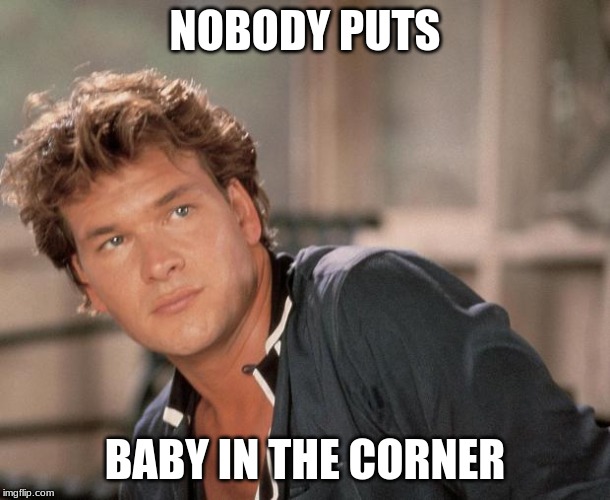Why Nobody Puts Baby In The Corner (Anymore)
The declaration embodies a resolute refusal to allow marginalization or belittlement of an individual, emphasizing the inherent worth and dignity of every person. This sentiment rejects the notion that anyone should be relegated to a position of insignificance or treated as secondary.
This principle resonates deeply within social contexts, challenging systems of oppression and advocating for inclusivity. Historically, its application extends to various movements seeking equality and recognition for marginalized groups. It promotes a society where contributions are valued regardless of status or perceived influence.
Therefore, an examination of power dynamics, social justice movements, and the inherent value of individual contribution is critical. Subsequent analysis will explore the ramifications of this concept in various fields, including leadership, education, and interpersonal relationships.
- Here S How Much Mia Farrow Is
- Ross Naess Children Indigo Naess Leif Naess
- M I A Rapper Family Husband Children
- Who Is Kevin Bacon S Son Travis
- Astrology Birth Chart Of Matthew Sturniolo Tiktok
Frequently Asked Questions
The following addresses common inquiries pertaining to the underlying concept of preventing marginalization or belittlement, as it is often referenced.
Question 1: What constitutes "putting someone in the corner?"
It signifies the act of devaluing, ignoring, or silencing an individual, effectively removing their agency and influence within a given environment or situation. This can manifest through exclusion from decision-making processes, dismissal of ideas, or overt disrespect.
- Debbie Cartisano Where Is Steve Cartisano S
- Matt Lauer Net Worth In 2024 How
- Few Untold Truth About Masters Of Flip
- What Is Mike Johnson S Net Worth
- Vick Hope Bio Age Wiki Facts And
Question 2: Why is avoiding this marginalization important?
Preventing marginalization fosters inclusivity, promotes collaboration, and maximizes potential. It ensures diverse perspectives are considered, leading to more effective problem-solving and a more equitable environment for all involved.
Question 3: In what contexts does this concept apply?
The principle is universally applicable, extending to professional settings, personal relationships, and broader societal structures. Its relevance is particularly evident in contexts where power imbalances exist or where certain groups are historically marginalized.
Question 4: How can one actively prevent marginalizing others?
Active listening, valuing diverse perspectives, ensuring equitable opportunities for participation, and challenging disrespectful behavior are essential strategies. Cultivating empathy and awareness of unconscious biases are also crucial.
Question 5: What are the potential consequences of ignoring this principle?
Ignoring the potential for marginalization can lead to decreased morale, reduced productivity, stifled innovation, and a perpetuation of inequitable power dynamics. It can also result in legal and reputational damage for organizations.
Question 6: Is there a risk of oversensitivity in addressing this issue?
While sensitivity is important, genuine efforts to create an inclusive environment are rarely perceived negatively. Open communication and a willingness to learn from mistakes are key to navigating potentially sensitive situations effectively.
In summary, recognizing and actively preventing marginalization is paramount for fostering inclusivity, maximizing potential, and creating a more equitable society.
The subsequent section will delve into practical strategies for implementing this principle in various leadership styles.
Strategies for Fostering Inclusion
The following represents actionable strategies designed to promote inclusion and ensure all individuals feel valued and empowered within various environments.
Tip 1: Actively Solicit Diverse Perspectives: Consciously seek out and incorporate viewpoints from individuals representing a wide range of backgrounds and experiences. This mitigates the risk of groupthink and ensures a more comprehensive understanding of complex issues.
Tip 2: Establish Clear Communication Channels: Implement transparent and accessible communication protocols that facilitate open dialogue and feedback. This promotes accountability and allows individuals to voice concerns without fear of reprisal.
Tip 3: Provide Equitable Opportunities for Advancement: Ensure that all individuals have equal access to training, mentorship, and promotional opportunities based on merit and potential, regardless of background or identity.
Tip 4: Challenge Microaggressions and Biases: Actively address subtle, often unintentional, expressions of prejudice or discrimination. This requires a commitment to continuous learning and a willingness to confront uncomfortable truths.
Tip 5: Promote Collaborative Decision-Making: Involve individuals from various levels and departments in the decision-making process. This fosters a sense of ownership and empowers individuals to contribute their expertise.
Tip 6: Foster a Culture of Psychological Safety: Create an environment where individuals feel safe to express dissenting opinions, take risks, and make mistakes without fear of judgment or punishment.
Tip 7: Implement Inclusive Leadership Training: Provide training to leaders on topics such as unconscious bias, cultural sensitivity, and inclusive communication. This equips them with the skills and knowledge necessary to promote a more equitable environment.
By consistently implementing these strategies, organizations and individuals can cultivate a more inclusive environment where everyone feels valued, respected, and empowered to contribute their best work. This ultimately leads to increased innovation, productivity, and overall well-being.
The concluding section will provide a summary of the key principles discussed and offer final thoughts on the importance of ongoing commitment to inclusivity.
Conclusion
This exploration of the concept inherently captured within the phrase "nobody puts baby in the corner" has illuminated the critical importance of inclusivity, respect, and the active rejection of marginalization. The preceding sections have detailed practical strategies for fostering environments where individuals feel valued and empowered, emphasizing the need for equitable opportunities, open communication, and the consistent challenging of biases.
The enduring significance of actively ensuring that nobody is relegated to a position of insignificance remains paramount. The ongoing commitment to these principles is not merely a matter of ethical obligation, but a strategic imperative for fostering innovation, maximizing potential, and creating a more just and equitable society. Therefore, continued diligence in promoting inclusivity is essential for sustained progress and collective well-being.
- Does Phaedra Parks Own A Funeral Home
- Tom Sandoval Parents Meet Anthony Sandoval And
- Dekenta Parchman Michigan Man 30 Who Tortured
- Is Tyler Langford Based On A Real
- Matt Lauer Net Worth In 2024 How

Nobody Puts Baby In A Corner Dirty Dancing Digital Art by Stella White

Patrick Swayze Imgflip

Nobody Puts Baby in a Corner Digital Print Dirty Dancing Inspired